#2007 or10
Text
(225088) 2007 OR10
225088 Snow White (The Myth of Snow White ~ 21 Aug 2011 Philip Sedgwick)
Since 2007 we’ve known of the existence of another dwarf planet, bearing a preliminary designation of 2007 OR10, a minor planet number 225088, and the nickname Snow White. The nickname assigned by discovering astronomer, Dr. Mike Brown, had to do with its apparent high reflectivity and brightness, which was similar to that of Haumea. Early on, Brown considered that this body might have been a part of the object that suffered a collision in the Kuiper Belt that produced Haumea, her moons, icy traveling companions and other yet undetermined bodies.
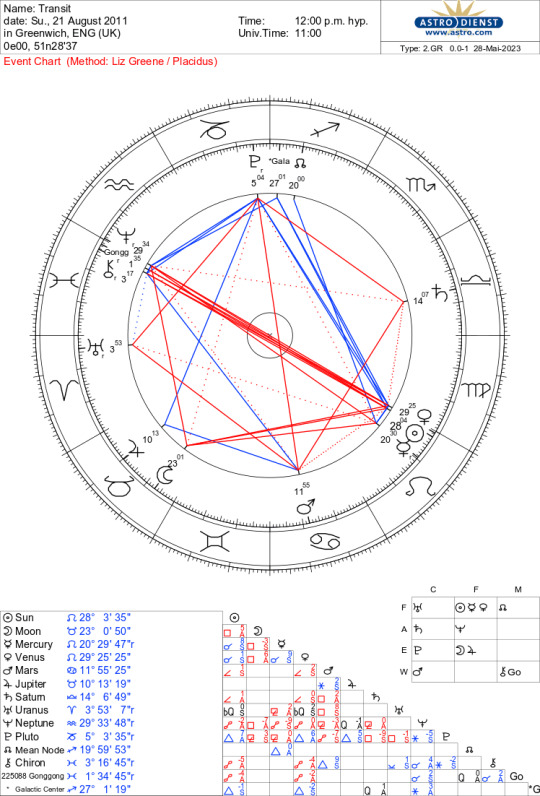
The speculations - the myths if you will - of Snow White have come unraveled by recent discoveries. As with Eris, who initially bore the nickname Xena (and her moon Dysnomia was known as Gabrielle), I was reluctant to delve into the mythology of Snow White’s lore as the official mythic archetype of 225088. Thus, my initial impressions of this planet (I just don’t like selling these powerful Kuiper Belt bodies
short by referring to them as dwarf planets) were derived from the position of the body’s node in Pisces and perihelion in Libra aligned with the super-massive black hole constituting the Super-Galactic Center. As well, the perihelion and node degrees of this body form an adjustment-oriented quincunx between them.
Mike Brown, discovering astronomer of 225088, reactivated his blogs during the past weeks, announcing new revelations about the body. First, it is twice as bright as they figured during those initial observing nights of less than optimal visibility. Second, it is not white at all. It is red. And it is the reddest object known in the Kuiper Belt. This makes 225088 presumably the fifth largest body in the outer solar system behind Eris, Pluto, Makemake, Haumea and Sedna, a most curious, name-worthy body. As well, it is the largest dwarf planet without a name.
Last evening the third part of Brown’s article posted. This article dealt with theoretical models as to a fading atmosphere, possible chemical composition and what might be the source of 225088's redness. From an astrological model, this was not entirely helpful in defining any key interpretive attributes. And again, it’s all based upon raw data and the early conclusions may not stand up over time.
What does this mean to those seeking support from the planet? Immediately, some groped to retain the Snow White myth, though 225088's naming will eventually erase this lore. Suggestions came to Brown’s blog site. They ranged from considering the red object to be the apple in the Snow White story, or back in the early days of the tale, it was Snow White and the Red Rose. Could 225088 be the rose? I say abandon efforts to make pre-Grimm (fairy tale) lore fit, despite the flutter of Hollywood movies in development, aching to tell the latest rendition of the Snow White story, complete with casting wars drama.
Regardless, this is good news for those invested in the importance of the social, cultural and spiritual implications of the names assigned to heavenly bodies - like astrologers. For those seeking remedies to the ever increasing list of social maladies and complexities, here is another planetary antidote that affects everyone, whether they chose to recognize and integrate the energies or not. But how to interpret the essence of this planet? What will it be called?
Sadly, astronomers are no further along on the naming. Brown’s recent data suggests that it is no longer acceptable for this planet to linger without a good name. In an e-mail exchange with Dr. Brown during these last days, he admitted that as of yet, they had not even begun to think of a name.
Immediately, I wanted to offer suggestions - but I thought of none. Personally, I’d like to see a mythology from an alternate culture again as was the case with Makemake, Sedna, Haumea and others. But based upon the information I possess, I felt ill-equipped to make a suggestion. Having submitted names (and had them accepted) for the centaurs, Elatus and Thereus, I know of the justification process one must go through to argue for the name submitted. I had no statements to support any of my “I wish this name were in the heavens” favorite names. Like all astrologers, I’ll sit back and wait for the discovering astronomer, who despite our differing views of Pluto, I admire and enjoy. After all, as discoverer, it is his right to submit a name for the body. He’s on it now. I’m sure something will come forth soon. And I’ll keep sending check-in e-mails to try and get a heads up or tip off, which of course, I’ll pass along.
In the meantime, we can review the implications of the nodal placement and degree of the perihelion of 225088.
The Pisces node suggests compassion and forgiveness. Having watched this idea in action for as long as I’ve known of this body, I’m now convinced this is an internal matter, personally applied to one’s own psyche and soul. Render understanding to your nature and ways, working to ease internally applied justifications. While the economy is so bad, it might be a good time to fire any inner critics, internal nasty editors or judges who badger from the stage wings of consciousness.
The perihelion degree of 225088 stands very close to the super-massive black hole complex that is the center of the Super-Galaxy. This amazing range of degrees lies in early Libra (and late Virgo) and offers up a key theme of deference. While Libra typically can be assigned the “do unto others” and “play nice in the sandbox,” axioms, which work quite nicely with this region of space, the “consider others before yourself” part of Libra, needs some touch up work. Be nice and considerate, yes. But the true deference implied in this point is that of deferring to the needs of your soul such that none of your spirit-based lines in the sand become compromised.
Years ago when negotiating for an online writing gig, the paying party’s lawyer asked me something to the effect of, “What’s the least amount of money and benefit conditions you can accept for this gig so that you won’t end up feeling compromised and hating the job later?” It was a great question. It is a question that roots in the core of the Super-Galactic Center, and as we now know, stands supported by our unnamed dwarf planet, 225088. Defer to your soul. Negotiate, but not to the point of losing dignity, self-respect and soulful integrity.
The quincunx angle between the node and perihelion strengthens the importance of soulful self-preservation. The aspect promotes high standards in personal interactions. Have no illusions of your relationship with others. You know, personally embellished skews such as: If Spielberg would only read my script, he’d love it!; I don’t need to submit a thesis, that silly university should know I’m going to win a Nobel Prize; I’ve never hit against a major league pitcher, but I know I can. On the other side, do not sell yourself short. Know your assets and attributes, largely by firing those inner voices, and representing yourself and what you have to offer clearly, professionally and without the demand or expectation that you be recognized. When finalizing agreements, ensure the benefits you receive stand in direct proportion to your output and dignify your presence and participation.
Presently, 225088 engages in a long conjunction cycle with Chiron in Pisces and an opposition with the Etruscan Pluto and keeper of oaths, Orcus, in Virgo. In the interest of well-being and ongoing personal healing and soulful betterment, make promises to yourself you can keep.
In the next days, transits of planets in Virgo, opposing 225088 should highlight the long term these influences should we look. Consider:
Within the next day and a half, Venus opposes 225088. This could be a mini-mother lode of self-affirmation and self reclamation. Rediscover your talents, attributes and resources. Both Venus and 225088 are bright and shiny. Break out the Never-Dull and polish up your potential and promise. As you go forth, let yourself shine.
On Wednesday (depending upon where in the world you are) the Sun opposes 225088. The efforts and exertions made within the next couple of days just might receive the kind of feedback you’ve been wanting, especially when presented with solar brilliance and flair - not to be confused with eruptive solar flares.
On September 9th, Mercury comes back to oppose 225088. Should you be reluctant to venture forth verbally with Mercury retrograde, this would be your chance to state recent realizations, renewed personal affirmations and discoveries of valuable minerals in between those internal stalactites and stalagmites located in Soulful Caverns.
Finishing the personal planet parade to 225088, Mars opposes the new planet on November 13th. His position will be: enough talk, enough affirmation, enough chanting, way too much tweeting and blogging. Do something to apply 225088.
This planet runs in an orbital period similar to that of exclusion sensitive Eris (549.51 years). Perhaps, if feeling left out, shunned or cut out, 225088 prints a boarding pass permitting entry or re-entry into previously inaccessible realms. Since the orbital period ranges longer than that of Pluto, the namesake should be one of creation, emergence from the underworld or resurrection. Hopefully, soon, we’ll have the namesake to support the undefinable latent spiritual surges presently stirring.
In other Kuiper Belt news, those with an ear to the astronomical ground might have seen the buzz in the past week that three new Kuiper Belt objects have been found, one possibly as large as 250 miles in diameter. It’s true, but it’s not clear to me that the initial data suggests another dwarf planet in the batch. I’ve seen no data as of yet, but when I do, more will follow.
You know, if the times are more than challenging or confusing, or if you’re wanting to include dwarf planet transformation in life, perhaps it’s time to weave the important influences of those dwarf planets into your horoscope with a consultation.
Maybe a life antidote stands at the ready. Or maybe it’s time for the Galactic Trilogy CD. Certainly, you’ll be needing the DVD with the presentations on Haumea and The Consciousness of the Solar System.
1 note
·
View note
Text
225088 2007 OR10
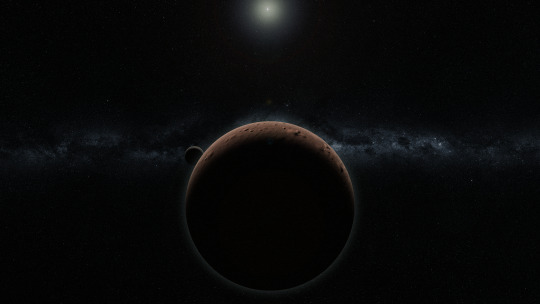
2007 OR10 is the solar system’s largest unnamed body. It is approximately 1,250km in diameter, and is a binary object.
2007 OR10 was discovered by Mike Brown and co in 2007, and was nicknamed “Snow White” for its brightness and assumed white colour, but later it was found to be one of the reddest objects known to this date due to the rays impacting its surface. Its redness was only comparable to that of Quaoar.
2007 OR10 has been found to have water ice and methane, making it similar to the other planetoid Quaoar also. It is likely that 2007 OR10 may have an atmosphere but that is not known. Another similarity 2007 OR10 and Quaoar share is that they may have evidence of cryovolcanism in the form of water ice upon their surfaces but it is not known if they both can sustain subsurface oceans.
2007 OR10 is likely to be in a 3:10 resonance with Neptune and is listed as what we know as a Scattered Disk object, objects ejected into widely eccentric and inclined orbits by the movement of Uranus and Neptune in the early days of the solar system. Eris is one of these SDOs, but Eris is not in any resonance.
Currently, 2007 OR10 is located 88x further than Earth is from the sun, making it extremely cold there. It is probably -240 Celcius or colder on 2007 OR10. By 2045, 2007 OR10 will be the furthest large body in the solar system, being further out than both Sedna and Eris. It will reach an aphelion of 101 AUs by 2130.
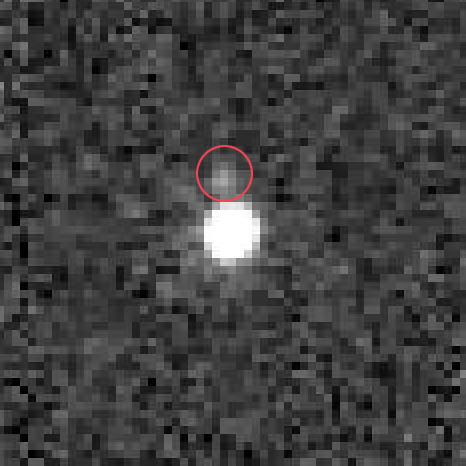
2007 OR10 has only one known moon, and was announced in 2016. It was found from images in 2010.
A moon was suspected originally from 2007 OR10′s slow rotation rate, usually caused by a moon slowing down the rotation like it did for our Earth.
2007 OR10′s moon diameter is not known but may be 300-100km in diameter maximum and possibly minimum.
Its orbit is actually well known, with an eccentricity of 0.31, raising the possibility that it may be a captured object, orbits once every 25 days and with a semi-major-axis of about 25,000km, or two Earths.
There is currently a poll going on to name 2007 OR10! The proposed names for 2007 OR10 are:
Gonggong, Vili and Holle.
https://2007or10.name/
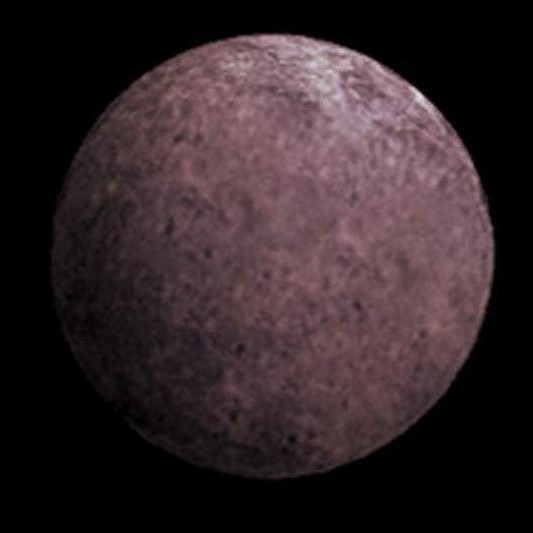
Artist’s impression of 2007 OR10
#2007 or10#moon#imagery#facts#space#astronomy#eris#kuiper belt#scattereddisk#sun#earth#poll#planetoid-adventure
3 notes
·
View notes
Text
くわい夢 くわい現実
Yesterday night I dreamt a new planet was born, and it was called Zephyr.
Now I find out there indeed has been discovered a “new” planet somewhere around Neptune. So far 2007 OR10 if i remember correctly.
No, not creepy at all.
Oh, also in my dream “he” was close to Saturn, and while he was forming, us onlookers’s dispositions soon started to change from being in happy awe to witness something so major, to being terrified when it turned out he had a consciousness, telling us which name to go by and that he was a planet of death and a conscious and powerful being out to destroy us with plagues and sickness.
Oh, yes, one of the three suggested names I saw for 2007 OR10 was “Holle”, aka Hel, aka a goddess of death. The other Vili, after Voden’s brother who gave humans their will as far as I remember.
Yupp, just an ordinary night for me 🙃
#my life#dreams#what the actual#planets#2007 or10#zephyr#also just another one of those many apocalyptic dreams ive been having since last year or so#heia heia#i’m ok#creepy#maybe
3 notes
·
View notes
Photo
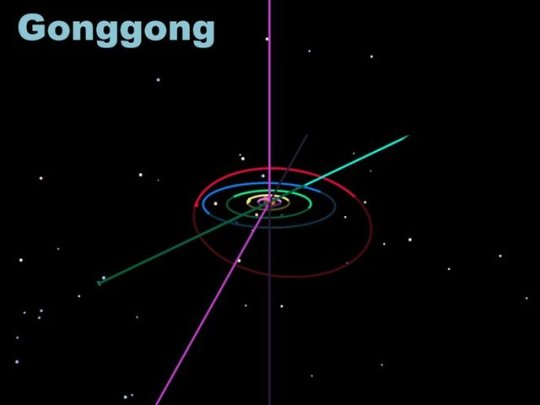
2007 OR10 , the 4th largest dwarf planet, has an informal name 'Gonggong' via /r/space http://bit.ly/2Wc1xJn
1 note
·
View note
Link
I forgot about R.R.S. Boaty McBoatFace. Ah, the joy of getting the public’s help in naming something.
1 note
·
View note
Link
My vote's for Gonggong.
1 note
·
View note
Note
Pallet's for Pluto, Erise, etc? (The dwarf planets?)
Here’s a palette for Pluto
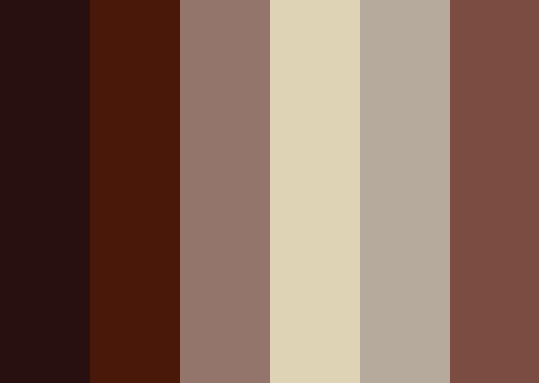
Ceres

Makemake
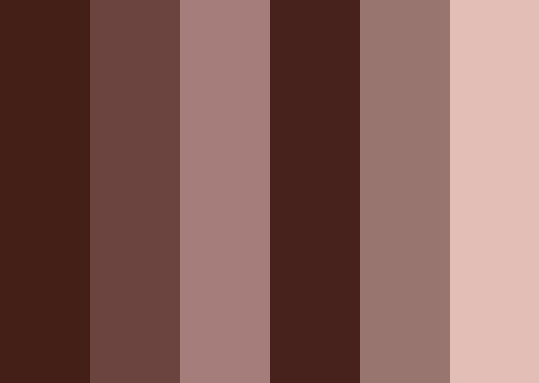
Haumea

Eris

2007 OR10
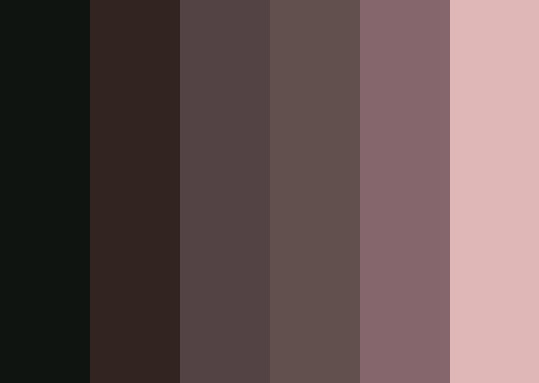
Hope this helps
#Pluto#Eris#2007 OR10#Makemake#Haumea#Ceres#Dwarf Planets#Space#Solar System#Color Palette#Color Me Curious
119 notes
·
View notes
Photo
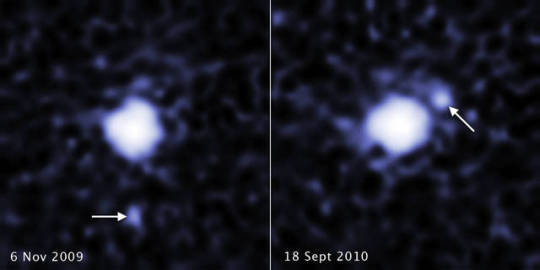
Hubble Spots Moon Around Third Largest Dwarf Plane
The combined power of three space observatories, including NASA's Hubble Space Telescope, has helped astronomers uncover a moon orbiting the third largest dwarf planet, catalogued as 2007 OR10. The pair resides in the frigid outskirts of our solar system called the Kuiper Belt, a realm of icy debris left over from our solar system's formation 4.6 billion years ago.
With this discovery, most of the known dwarf planets in the Kuiper Belt larger than 600 miles across have companions. These bodies provide insight into how moons formed in the young solar system.
Read more ~ NASA.gov
Image: Hubble spots a moon around the dwarf planet 2007 OR10. These two images, taken a year apart, reveal a moon orbiting the dwarf planet 2007 OR10. Each image, taken by the Hubble Space Telescope's Wide Field Camera 3, shows the companion in a different orbital position around its parent body. 2007 OR10 is the third-largest known dwarf planet, behind Pluto and Eris, and the largest unnamed world in the solar system. The pair is located in the Kuiper Belt, a realm of icy debris left over from the solar system's formation.
Credits: NASA, ESA, C. Kiss (Konkoly Observatory), and J. Stansberry (STScI)
6 notes
·
View notes
Text
(225088) Gonggong
225088 Gonggong (Gonggong ~ 18 Jun 2019, Philip Sedgwick)
Before we begin addressing our newly “named” planet, a note of awareness for ongoing transits. Mercury and Mars now align in Cancer, opposing the virtual midpoint of Saturn and Pluto in Capricorn. Before engaging in knee-jerk or impulsive retorts and actions, leave retaliation out of the equation and consider
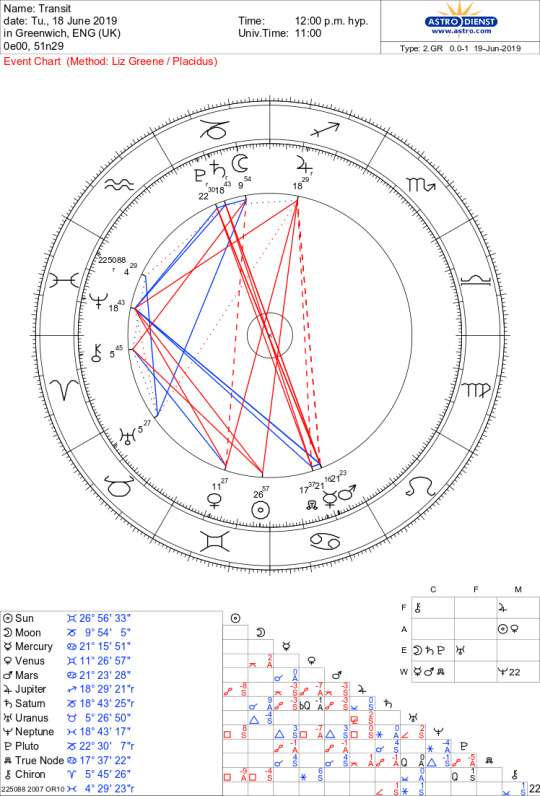
that all thoughts, words, deeds rendered must align with the greater good to honor the nearness of the node to Mercury and Mars - your greater good and the greater good of the planet. Stay focused, no distractions while engaged with activity that requires full attention. Remember we’re all part of the Planet Earth tribe.
An official name for the Kuiper Belt Object 225088 (2007 OR10) awaits approval. The discovering astronomers, using crowd sourcing for voting, have submitted the name Gonggong for this object. Now it is a matter of the International Astronomical Union ratifying the suggested name, which in all likelihood will occur sometime in the reasonable future.
Why do we care? Gonggong is a dwarf planet. He is equal in stature to Makemake, Haumea and arguably Eris and Sedna and other objects. He is a force to be included in our horoscopes and his planetary stature and naming make sense for a number of reasons
First, per the diagram below, his diameter lines up with other planet contenders. Please note, the diagram below is derived from source data of a few years ago and the diameters of these bodies have been amended. Still, the sizes are close to present day accuracy and the image offers perspective as to GongGong’s (2007 OR10) relative size perspective.
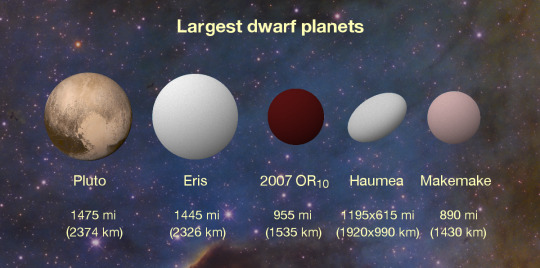
Second, the evidently unending flooding of rivers (and impact on farmland) is now a global climate change factor (see mythology below) for all the inhabitants of Earth to recognize and engage.
Third, China stands as one of the greatest powers in the world and constantly makes headlines whether because of their interactions with Russia, North Korea or the United States, and the ongoing question (and conflict) of the sovereignty of the Republic of China (Taiwan). A Chinese myth makes sense for integration into modern collective astrology.
Fourth, the color of 225088, despite appearing brilliantly white in early images which led to an early nickname of Snow White, is one of the reddest objects in our solar system, which aligns with his red hair as noted in descriptions below.
Here’s some data. The orbital period is in the range of Eris’ at 553.04 years. The north node is 6 Pisces 51 and the perihelion degree is 4 Libra 23 (note: both degrees are heliocentric). For those of you who have the Galactic Trilogy, the ephemeris for 225088 is the ephemeris for Gonggong. I checked the calculations in the existing calcs for 225088 against the latest revised data and there is no change. I am working on revising keywords for Gonggong and expect to have that complete soon.
GogGong (Gonggong) in Chinese mythology and folklore is a water god (according to some, a blundering, evil black-bodied dragon) seen with red hair atop a human head on the body of a serpent, or human head - again with red hair - on a human torso with the tail of a serpent (or dragon). His nature is combative and defensive and his confrontations are blamed for various cosmic catastrophes from floods to the tilt of the earth in our solar system. He was noted for being ambitious, cruel, vicious and cursed with an abundance of stupidity.
Gonggong is known from the late Warring States period (before 221 BCE). Gonggong appears in the ancient Heavenly Questions (Tianwen) poem of the Chu Ci, where he took on Zhurong, the Chinese fire god in a battle for the throne of heaven. In this battle Gonggong was defeated. Ashamed and embarrassed with his loss, he flew into a fit of rage and smashed his head against Buzhou Mountain, one of eight pillars holding up the sky.
This head butt seriously damaged the pillar and caused the sky to tilt northwest wherein the Sun, Moon and stars followed, and Earth shifted southeasterly, which caused great floods and the resulting destruction and suffering. The incurred axial tilt is why the rivers of China generally flow to the southeast, especially the Yangzi and Yellow Rivers. Often Gonggong’s influence over great floods was exerted in concert with his associate or subordinate, the dragon Xiangyao (or Xiangliu) who has nine heads and the body of a snake.
Presumably, this tilt factor relates to the obliquity of the ecliptic, and curiously as his naming occurs, it is reasonably coincident with recent online news that the Earth’s magnetic field now migrates to the northwest!
Seemingly the battle between Gonggong and Zhurong lasted several days with furious exchanges of blows. The combatants fell from heaven, landed on earth where Gonggong realized his defeat. Zhurong ascended into heaven for a lap of honor (victory lap?). For his pillar of heaven destruction, Gonggong was either punished by exile or death.
Following the head butting incident, the goddess Nüwa (Nu-Gua) cut off the legs of the giant turtle, Ao, and used them in place of the fallen pillar. This ended the flooding, however, she could not correct the tilt of the Earth and the effects of that upon the Sun, Moon and stars.
While the mythology results in shame and diminishment for Gonggong, there are stories of an actual person named Gonggong, a leader who lived in ancient China. Gonggong suggested filling low-lying areas and creating dams to prevent floods. The resulting campaign was a boon for farming. Gonggong is considered the second most influential person in ancient Chinese farming. It is said that the myth of Gonggong’s battle with Zhurong came from the human Gonggong’s battle with another leader of his day.
In the urban dictionary it is stated that Gonggong is: An ancient Chinese person who is destined for greatness. This name is passed down to generations.
Interpretively, Gonggong’s Libra-Pisces orbital element dynamics lean toward establishing impeccable relationships. The defeat of codependence and any unhealthy interpersonal need is implied. Boundary awareness occurs, as in creating partitions and limits on interactions with others as to avoid feelings of overwhelm, being submerged, or feeling flooded and drowned by the emotional impact with others. The “tilt” of Gonggong implies angling perspective for a fresh point of view as to what is one’s guiding star in life. Gonggong delivers an unapologetic attitude about ones talent, creativity and display of artistic wares. These traits presently emphasized by his transit of 4 Pisces 29, retrograde.
So here’s an astrological newcomer yearning for integration into interpretation. Here’s to Gonggong being a personally inspiring contact and for his transit to inspire renewed interest and appreciation of art, creation, culture... and farming.
For those wanting a consultation, I have modified my astrological software to include both G!kún'hòmdímà and Gonggong. While interpretation of these bodies is preliminary, certainly they can be included as assets in addressing current astrological signatures. Click on and get scheduled! The Galactic Report is also available and with its singular astrological considerations, new perspectives like the point of view shift implied by Gonggong can be derived from one of these. Soon I will have keywords and revised data for Gonggong included in the Galactic Trilogy, so it may be a great time to order that!
Finally, the short film I penned Otro Lado will screen 6 July in Istanbul at the Ottoman Film Festival: Ottoman Film Festival
4 notes
·
View notes
Note
Pluto aside what's your favorite planet? I'm not an astronomy guy but I passively enjoy people talking about weird astrographic features. Like ring galaxies and shit
of the major planets it's hard to choose but either Earth (so much cool stuff is here!) or Saturn (rings pretty).
of the minor planets, I gotta go with the Gonggong. I've liked Gonggong since back when it was still called 2007 OR10. for a really long time, it was the largest unnamed object in the solar system. and I always felt like it was strange how there was this almost-certainly dwarf planet which even has its own moon that hadn't been given a name yet, and that it really deserved to have one
and then it was named Gonggong and it's the perfect name for it. worth the wait!

216 notes
·
View notes
Text
Space Engine Renders
Pluto-Charon

Quaoar-Weywot
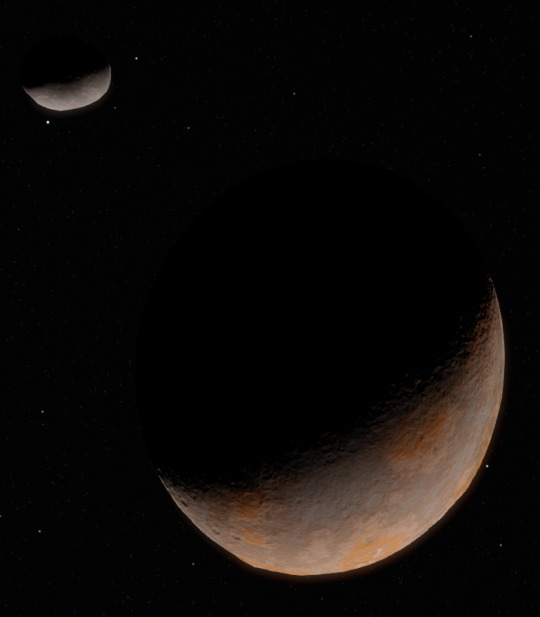
Makemake-MK1
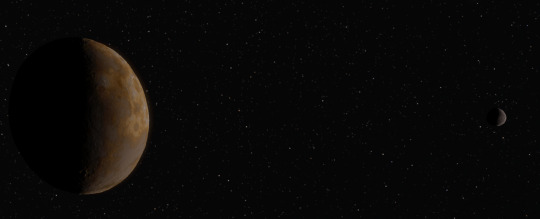
Orcus-Vanth

2007 OR10

Haumea, Namaka-Hi’aka

Sedna
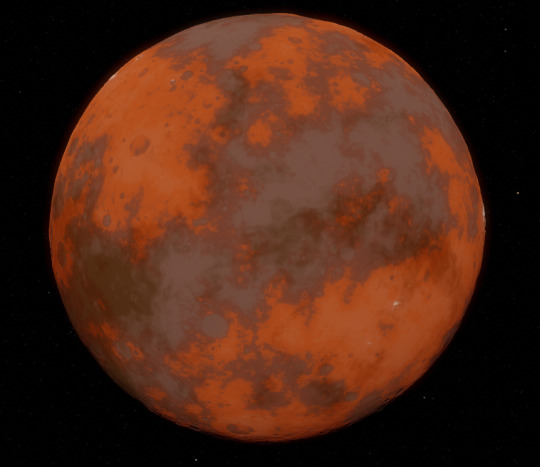
Eris-Dysnomia
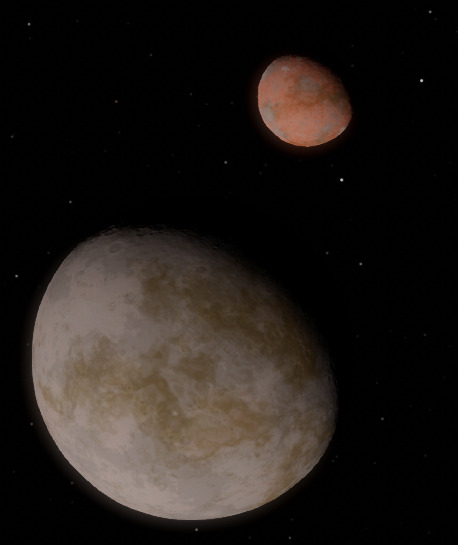
Ixion

G!kun + Goe Hu
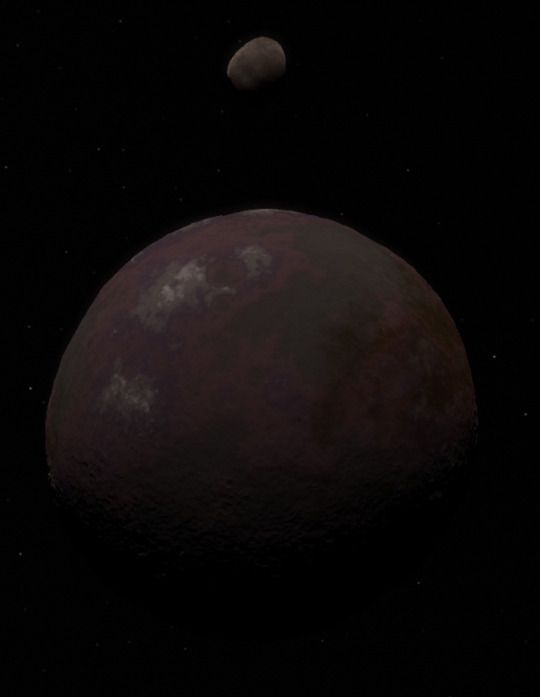
Varda-Ilmare
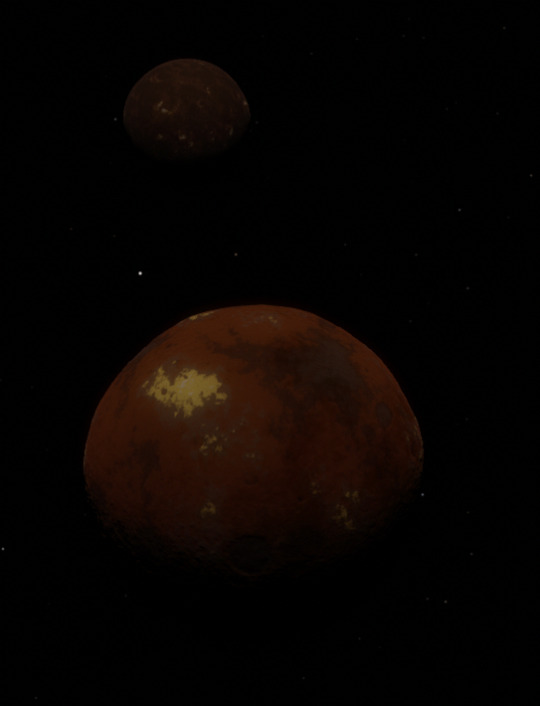
#pluto#charon#eris#dysnomia#varda#varuna#ilmare#ixion#sedna#haumea#namaka#hi'aka#makemake#quaoar#weywot#space#astronomy#space engine#kuiper belt#scattered disk#scattereddisk#kuiperbelt#spaceengine
169 notes
·
View notes
Text
Public Invited to Help Name Solar System's Largest Unnamed World
Pasadena CA (SPX) Apr 10, 2019
More than 10 years since its discovery, (225088) 2007 OR10 is the largest minor planet in our solar system without a name, and the 3 astronomers who discovered it want the public's help to change that. In an article published by The Planetary Society today, Meg Schwamb, a planetary scientist who helped discover 2007 OR10, announced a campaign inviting the public to pick the best name to submit t
Full article
17 notes
·
View notes
Photo
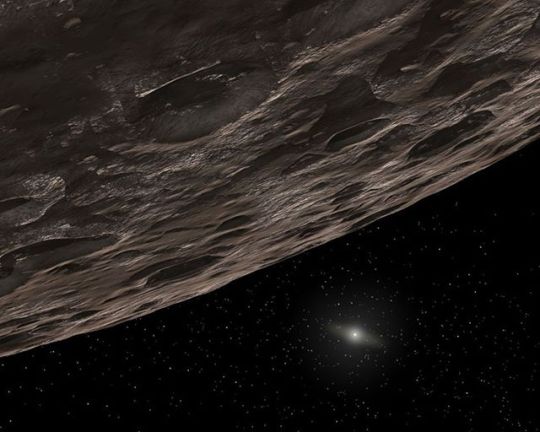
Gonggong? Or Holle? Or Vili? Help Name the Largest Unnamed World in the Solar System⠀ ⠀ A team of planetary astronomers is asking the public to help name a minor planet designated 2007 OR10, which is the largest unnamed world in the solar system.⠀ ⠀ The public has one month to choose between three semifinalists: Gonggong (a Chinese water god), Holle (a European winter goddess associated with fertility, rebirth and women) and Vili (a Nordic deity who helped defeat the frost giant Ymir). ⠀ ⠀ You can cast your vote at http://bit.ly/2uXDNsa until May 10 at 8:59 p.m. EDT (0359 GMT May 11). ⠀ ⠀ The object's orbital location requires its official name be inspired by a creation deity, according to the nomenclature guidelines developed by the International Astronomical Union, which oversees all names in planetary science. The team also wanted to select names that would accommodate related names for 2007 OR10's moon, should a formal name for that object become necessary. ⠀ ⠀ All three contenders for 2007 OR10 are references to deities somehow associated with the color red, the team wrote on the website accompanying the public vote. The deities selected also relate to either ice and snow or to the interior of something becoming the exterior, two themes associated with what scientists know so far about the object's history.⠀ ⠀ The world is roughly 775 miles across, making it smaller than Pluto, and orbits in the Kuiper Belt — a region of small, icy objects beyond the orbit of Neptune. It was discovered in July 2007. Since then, scientists have confirmed it has a reddish surface, suggested it may sport long-dormant ice volcanoes and discovered its moon.⠀ ⠀ The current name, 2007 OR10, is a designation from the Minor Planet Center, an entity that catalogs all solar system discoveries, which added the object to its records in November 2009.⠀ ⠀ Once the object receives a formal name, it will join the company of other well-known minor planets, like Haumea, Makemake, Eris and Sedna. ⠀ ⠀ Image Credit: NASA/JPL-Caltech/T. Pyle (SSC))⠀ Text Credit: Elizabeth Howell for space.com via Instagram http://bit.ly/2P3Ot1Q
13 notes
·
View notes
Text
[BLOG] Some Friday links
[BLOG] Some Friday links
Matt Thompson at anthro{dendum} writes about the complex, often anthropological, satire in the comics of Charles Addams.
Architectuul looks at the photography of Roberto Conte.
Bad Astronomy’s Phil Plait notes a new computer model suggesting a supernova can be triggered by throwing a white dwarf into close orbit of a black hole.
D-Brief noteshow ammonia on the surface of Pluto hints at the…
View On WordPress
#2007 or10#agriculture#anthropology#architecture#astronomy#black hole#blogs#brexit#central asia#charles addams#chinese language#clash of ideologies#comics#computers#Demographics#earth#economics#european union#evolution#former soviet union#gardening#gardens#gonggang#human beings#internet#kuiper belt#latin america#libraries#links#magenta spreen
0 notes
Text
Third largest dwarf planet found to have moon
Third largest dwarf planet found to have moon
These two images, taken a year apart, reveal a moon orbiting the dwarf planet 2007 OR10. Each image, taken by the Hubble Space Telescope’s Wide Field Camera 3, shows the companion in a different orbital position around its parent body. 2007 OR10 is the third-largest known dwarf planet, behind Pluto and Eris, and the largest unnamed world in the Solar System. The pair is located in the Kuiper…
View On WordPress
0 notes